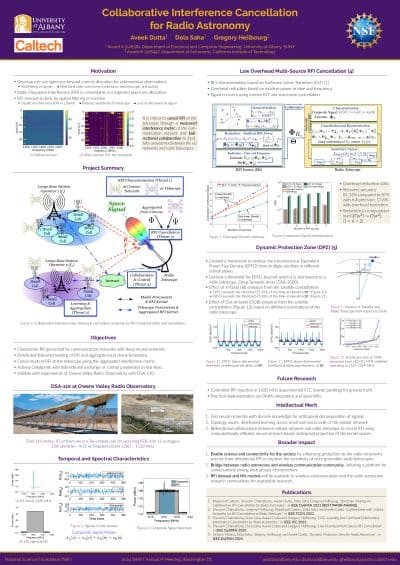Authors
Aveek Dutta, Dola Saha and Gregory Hellbourg
Abstract
This project seeks to enhance coexistence in shared frequency bands between wireless cellular networks and passive radio telescopes. This project helps address challenges created by growing congestion of the radiofrequency spectrum. If successful, the project will improve radio telescope capability through reducing interference problems. It will reduce barriers to further deployment of wireless networks, thus facilitating the high bandwidth reliable and ubiquitous connectivity needed for continued growth in the benefits of telecommunications. Interference problems between communications and radio telescopes have existed for a long time. One approach studied to overcome them has been active interference cancellation, in which the telescope receiver estimates the interfering communications signal then subtracts it from the astronomical measurement in order to expose the desired information. Most prior work on active cancellation assumes no cooperation from the cellular networks; this work studies how the telescope and cellular network could work together to improve cancellation performance. Most prior work measures the interfering signals at the telescope site, while this work measures the interfering signals at their transmission location; most prior work uses external spectrum monitoring devices, while this work characterizes the interference in the digital domain of the transmitter; these attributes of the approach give a clearer picture of the interfering signals at much less cost, but also create challenges that the project will seek to overcome.

